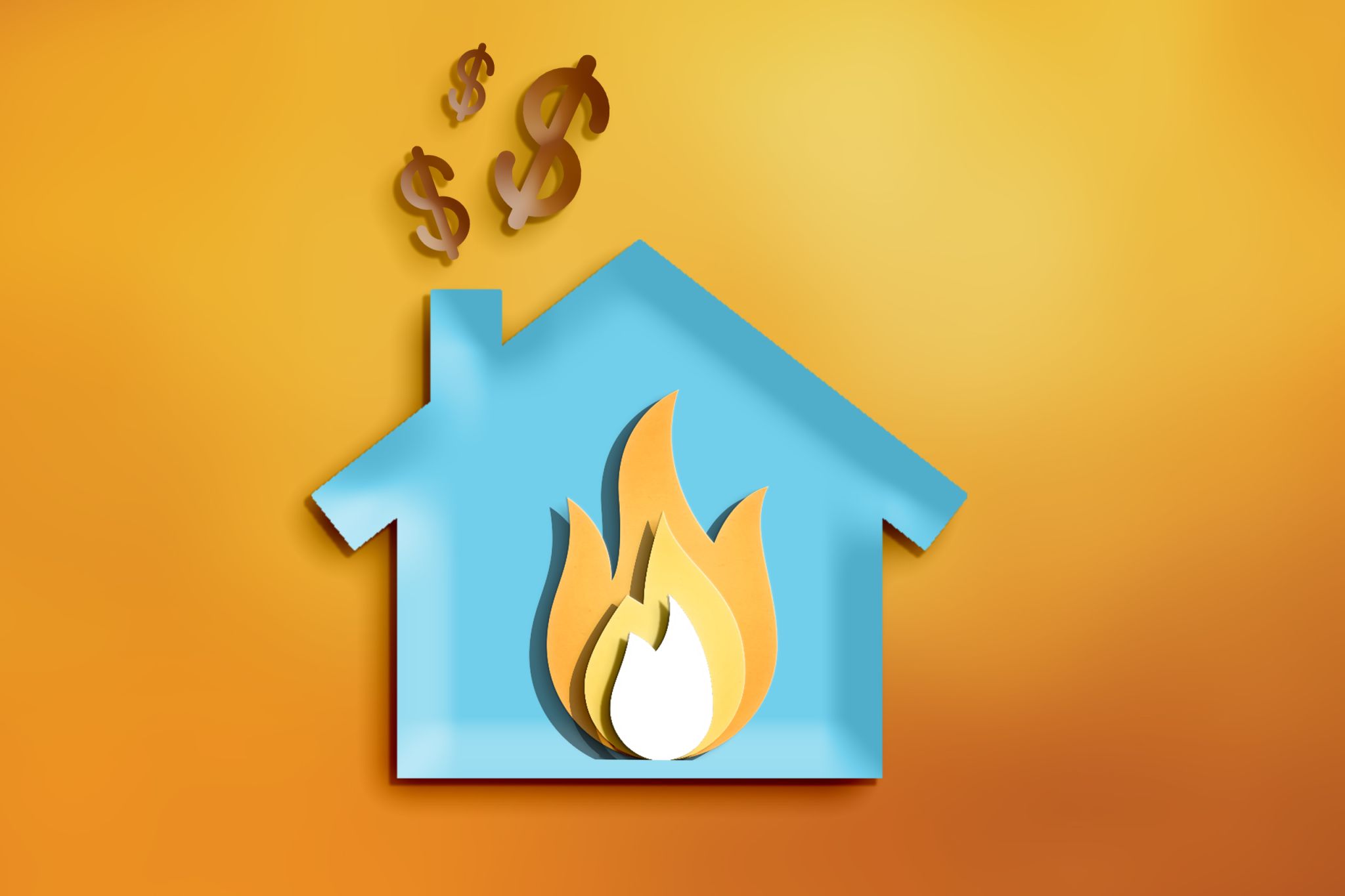What does your homeowners insurance cover? The short answer is that a basic homeowners insurance (referred to as HO-1 in insurance lingo) policy covers your home and possessions if they’re damaged or destroyed by these things:
- Fire
- Lightning
- Windstorm (unless you live in a hurricane zone)
- Hail (not available everywhere)
- Explosion
- Riots
- Civil commotion
- Aircraft (and things falling from aircraft)
- Vehicles (and things thrown from vehicles)
- Smoke
- Vandalism (although some policies exclude this)
- Malicious mischief
- Theft
- Volcanic eruption
But many states don’t allow this basic policy to be sold. Instead, you have to buy an upgraded policy that covers more perils.
Upgraded Homeowners Insurance
That upgraded policy (called HO-2) adds protection to your home and possessions from even more perils. You get protection from everything on the basic protection list (above), plus:
- Falling objects
- The weight of ice, snow, or sleet
- Flooding from your appliances, plumbing, HVAC, or fire-protection sprinkler system
- Damage to electrical parts caused by artificially generated electrical currents (such as a power surge not caused by lightning). But damaged electronics such as computers aren't covered.
- Glass breakage
- Abrupt collapse (say from termite damage)
That same list applies to the homeowners insurance you buy for a condominium or co-op, called HO-6.
With HO-1, HO-2, or HO-6, policies, what you see is what you get. So, if zombies attacked your home, none of these policies would cover the damage, because zombies aren’t on the list of specific things they cover.
The Most Complete Homeowners Insurance
The most complete and protective form of homeowners insurance (called HO-3) covers you for all perils except some specific ones including:
- Floods
- Earthquakes
- Wars
- Nuclear accidents
- Landslides
- Mudslides
- Sinkholes
With this policy, if zombies attacked, you’d be covered, because zombies weren’t specifically excluded by your HO-3 policy.
What Homeowners Insurance Doesn’t Cover
No matter which basic policy you get, it’s not going to cover everything than can damage or destroy your home. Typical homeowners policies don’t cover:
- Problems that occur because you failed to maintain your home (like mold)
- Hurricanes
- Floods
- Earthquakes
- Mudslides
- Landslides
- Sinkholes
- War
- Nuclear accidents
- Sewer backups
- Sump pump failure
- Ground movement and holes caused by mining (known as mine subsidence insurance)
- Pollution
You can buy additional policies to cover some, but not all, of those perils.
Even if insurance is available for the most common natural disaster in your area, you may not be able to buy it if your home has features that make it vulnerable. For example, a home with unrated wood shake roof shingles may be tough to insure in an area where wildfires are common.
Related: Should You Get Flood Insurance?
Other Things Homeowners Insurance Covers
In addition to covering your home, homeowners insurance also covers four more things:
1. Your outbuildings, landscaping, and hardscaping. If you have outbuildings (like a barn), landscaping, or hardscaping (like fences), your homeowners policy most likely covers those for up to 10% of your policy amount (5% for plants).
For example, if you have $100,000 in homeowners insurance and someone drives into your fence, the policy would cover 10%, or $10,000 in repairs.
Sometimes policies exclude damage to outbuildings, landscaping, or hardscaping caused by a particular peril (like wind).
2. Damage or loss of your personal belongings. Your homeowners policy covers your family’s belongings, even when you take them out of the house. If your child heads to college with a laptop and it’s stolen, that’s probably covered by your homeowners insurance policy.
A home insurance policy covers a lot of your personal belongings, but not necessarily everything.
You’ll need additional insurance if you have many expensive items like jewelry, furs, or antiques.
Policies will either state that your personal belongings are insured for replacement cost or cash value.
Replacement cost means the insurance company will pay the full cost of replacing an item (such as the laptop mentioned above, or a sofa damaged in a fire) once you show a receipt. Cash value means the insurance company will issue you a check for the amount the laptop or sofa would have been worth when it was stolen or destroyed.
3. Temporary living expenses if your home is so damaged you can’t live in it. When you can’t live in your home, your homeowners insurance covers your living expenses, including hotel bills and meals. But, you can’t live in the hotel forever and eat lobster every night on the insurance company’s tab. Your policy will have limits on how long you stay and how much you can spend.
4. Injuries or accidents at your house. Homeowners insurance coverage includes liability – meaning if you or your family members cause injuries or damage. This coverage also pays when your dog bites someone (medical payments) or someone falls and injures themselves.
Add an umbrella policy to boost your liability coverage into the millions.
Related: When a Tree Falls Over the Property Line, Who Pays?
Homeowners Insurance for Older Homes
Another kind of homeowners insurance (HO-8) is used when your home is so old that it would be impossible to replace. It couldn't be built like the original. So, for example, new electrical code wouldn't permit the same electrical, etc.
An HO-8 policy covers the same perils as the basic HO-1, but will pay you only the repair cost or market value, not the replacement value.
If your home is old, but not so old that it’s historic, you might want another homeowners insurance coverage. A “law and ordinance” policy covers the cost of rebuilding using today’s building codes. It’s good to have if the building codes have changed a lot since your home was built.
